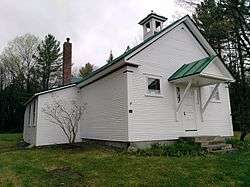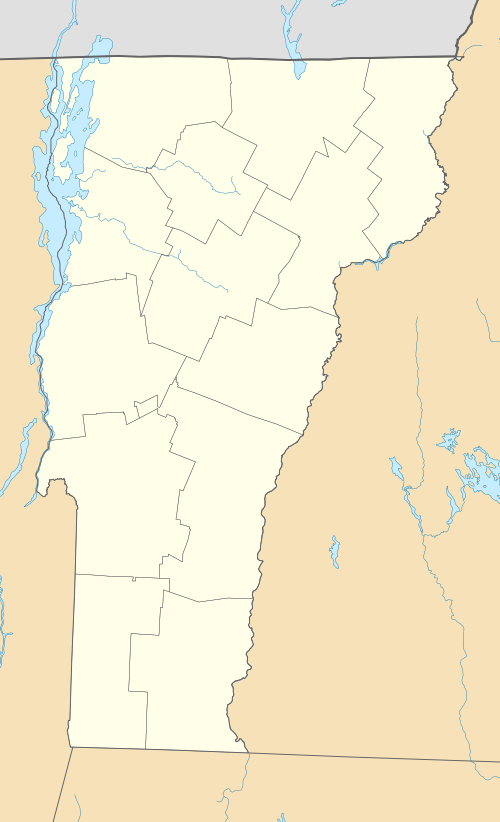Cobb School
The Cobb School is a historic district schoolhouse at Cobb School Road and Bridgman Hill Road in Hardwick, Vermont. Built in the 1840s, it is a well-preserved example of a Greek Revival district school building. It served as a school until 1946, aided by modernization steps taken in the early 20th century to maintain state standards. It was listed on the National Register of Historic Places in 1993.[1]

Cobb School | |
 | |
  | |
| Location | Jct. of Hardwick Town Hwy. 10 (Cobb School Rd.) and Bridgman Hill Rd., Hardwick, Vermont |
|---|---|
| Coordinates | 44°33′23″N 72°20′32″W |
| Area | 0.7 acres (0.28 ha) |
| Built | 1840 |
| Architectural style | Greek Revival |
| MPS | Educational Resources of Vermont MPS |
| NRHP reference No. | 93001007[1] |
| Added to NRHP | September 30, 1993 |
Description and history
The former Cobb School building stands in a rural area of central northern Hardwick, on a wooded lot at the west side of the junction of Cobb School and Bridgman Hill Roads. It is a single-story wood frame structure, with a front-facing gabled roof, clapboarded exterior, and a foundation of large granite slabs. A square open belfry rises from the center of the roof ridge, capped by a pyramidal roof. The main facade is three bays wide, with outer bays housing small fixed-pane square windows, and the centered entrance flanked by sidelight windows and topped by a hood with large plain angled brackets. The building corners have simple pilasters, which rise to an entablature on the sides. The north side entablature is interrupted by a bank of windows, an early 1900s alteration. The building interior has been converted to residential use.[2]
The Cobb School was built to serve Hardwick's District Four in the 1840s. It was built on land donated by John Cobb, to whom school-designated land had been leased by the town as a means of subsidizing the costs of education. The school underwent an interior update in the late 19th century, and in the early 20th century two banks of windows were added, a response to state standards on lighting conditions in schools. The building was electrified in 1915, but was never fitted with plumbing while it served as a school. It closed, due to declining enrollment and a comparatively high cost of operation in 1946. It was then converted into a residence.[2]
References
- "National Register Information System". National Register of Historic Places. National Park Service. July 9, 2010.
- Ann Cousins (1991). "NRHP nomination for Cobb School". National Park Service. Retrieved 2016-12-13. with photos from 1991